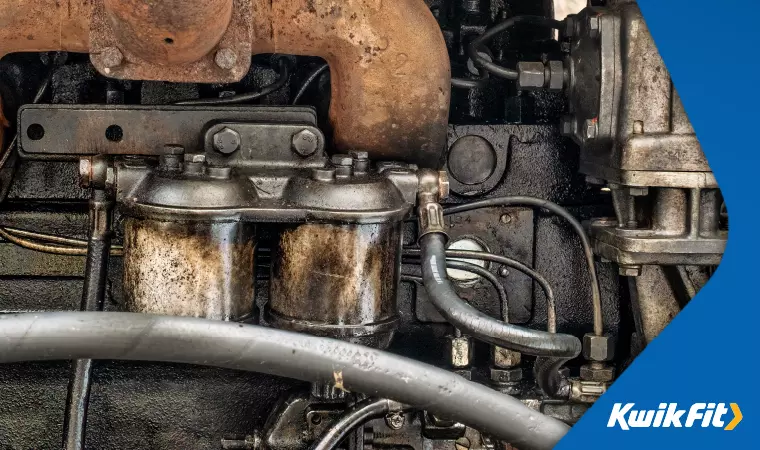How to Dissolve Diesel Sludge in Your Tank
Jack Dreyer | Monday 6th March 2023 8:00am

If your diesel filter is getting blocked up with dark, slimy stuff or your engine doesn’t seem to be running as it usually does, you may have an excess of diesel sludge in your tank!
This can be for a number of reasons and, left unchecked, can cause real headaches throughout your fuel & engine lines. But don’t worry – here’s what you need to know
What is diesel sludge?
Diesel sludge is a build-up of substances at the bottom of your fuel tank. The “sludge” itself can vary in viscosity, colour, and amount, but tends to form over periods of inactivity – and usually in larger tanks.
Learning how to deal with sludge requires knowing what sludge is and what type it is. Sludge can be caused by a number of factors because diesel is an organic compound: it’s already highly refined by the time it gets to your vehicle’s fuel tank but it’s still liable to organic decomposition.
The main causes are oxidative, thermal, or acidic degradation, mixing of fuels (and fuel qualities), contaminants, asphaltenes, and the dreaded Diesel Bug!
Let’s look briefly at what each of these are:
Environmental Degradation
Being an organic compound, diesel’s liable to degrade due to environmental conditions. This seems evident when thinking about “environmental” as “left outside” – that is, leaving a bucket of diesel open to air seems like a bad idea – but these conditions can still be applicable within a fuel tank. The tank heating up and cooling down over the course of a day and night, for example, creates the conditions for moisture buildup in the tank.
Over time (and without maintenance) this moisture buildup creates a water layer at the bottom of the tank. This isn’t usually pulled into the fuel line because the intake pipe is usually suspended a few centimetres up from the bottom of the tank. But the presence of water also creates the conditions for other issues to spring up.
Fuel mixing
This is more of an issue with large-scale applications like freight lorries and cargo ships: vehicles that need huge tanks and lots of fuel. The different purities of different diesel used can sometimes cause a build-up of half-mixed elements.
Contaminants
Things like dust, dirt, and grease occasionally find their way into the fuel tank. Over time, these can build up and provide a foundation for the growth of other things.
Asphaltenes
These are the compounds that make asphalt black. They’re the tarry parts of crude oil and, though most get removed in the refining process, are present in diesel. These tend to be hard and sticky, so easily gum up fuel lines & filters.
Diesel Bug
This is an algae-like microorganism that grows between the water and diesel. It attracts water and can double in size every 20 minutes – so can quickly become a real problem! Diesel Bug can be slimy at various viscosities and vary in colour based on exactly which type it is. But all types are problematic!
Problems with unchecked sludge

The main issue is that any sludge left unchecked, eventually, will find its way into the fuel lines, clogging up filters, and bunging up the engine. Diesel engines used to be quite resilient to just about anything but, in the bid to make them more fuel efficient, modern diesel engines aren’t as tolerant to contaminants as their grandparents were.
If the engine isn’t cutting out, then excessive black smoke from the exhaust can be a warning sign that fuel isn’t being combusted properly.
How to deal with sludge
Whether the sludge is organic or inorganic, the best first step is to completely drain the fuel tank. Now, large vehicles tend to have a drain plug, but cars and vans tend to either not have one at all, or have a small bolt.
If there isn’t one then you’ll have to have the tank pumped using an insertable hose – simply pumping using the built-in fuel pump will still leave a few centimetres of fuel and sludge at the bottom of the tank, so won’t address the issue!
Once the tank is completely drained, it’s worth leaving it to dry out, too. Diesel Bug can only grow if there’s water present, so allowing all the water to fully drain is a great way to begin getting rid of it. The next step is to refuel the tank and add a biocide. It’s important not to add an additive that binds to water & organic matter because then they’ll get pulled into the fuel line.
A biocide should simply kill any live diesel bug in the tank. Between the biocide and lack of water, that should solve your problem!
Concerned your car has a Diesel Bug?
If you’re finding your engine is behaving erratically and have seen diesel sludge in your filter, call the experts at your local Kwik Fit centre for advice on getting the fuel system cleaned up and ready to go!
Any facts, figures and prices shown in our blog articles are correct at time of publication.
Featured Articles
Is it Illegal to Drive With One Headlight?
Saturday 19th July 2025
Wondering if it’s illegal to drive with one headlight? Learn about the safety risks and penalties of illegal blown bulbs and why you should fix them promptly.
Air Con in EVs & Hybrids: Experts Answer Your Questions
Monday 30th June 2025
Does air con drain EV batteries? Can you use the air con while charging an electric car? Find out the answers to these questions & more from Kwik Fit’s experts.
Why Is Your Car Making a Noise? Fixes & Tips
Friday 13th June 2025
When your car starts making unexpected noises, it can certainly be quite disconcerting; it may be nothing to worry about, but here’s what you need to know.









